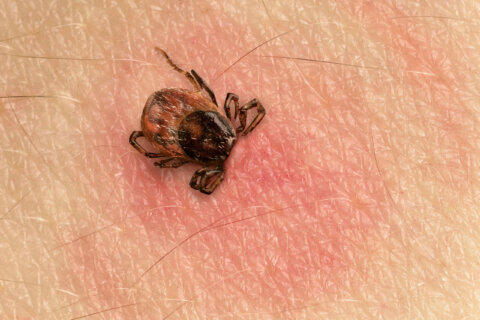WASHINGTON — Local researchers are working on a new way to treat Parkinson’s disease, and they are excited by the results of their first small clinical trial.
A team at the Georgetown University Medical Center took a drug developed for leukemia patients, cut the dose and tried it with 12 people who have either advanced Parkinson’s disease with dementia or a related illness called Lewy body dementia.
Their primary goal was to check for safety and rule out the likelihood of serious side effects. Along the way, they began to notice changes in the condition of the study participants, and soon realized that this experimental treatment was yielding unexpected and highly effective results.
“The efficacy was where we got our biggest surprise,” says Dr. Fernando Pagan, director of the Movement Disorders Program at Georgetown.
He says they had hoped to be able to stabilize patients, but instead got much more. Across the board, study participants displayed improvements in cognitive and motor function. That’s virtually unheard of in advanced cases of Parkinson’s, where existing treatments given to improve one set of symptoms tend to worsen the other.
Pagan says one patient who had trouble speaking and understanding the spoken word suddenly began talking and high-fiving his nurses during the trial.
“He was even able to crack a few jokes and help with his care,” Pagan says, noting that other study participants saw similar levels of improvement.
All this happened after long hours of research in Georgetown’s Laboratory of Dementia and Parkinsonism. Dr. Charbel Moussa, the neurologist who runs the lab, was the first to test the notion that Nilotinib — a cancer drug already cleared by the FDA — could be beneficial to patients with neurodegenerative diseases such as Parkinson’s.
“I think the idea came from looking outside the box,” says Moussa.
Nilotinib — which is produced by Novartis under the brand name Tasigna — is a targeted therapy, used to reduce the activity of certain proteins in cancer cells. Moussa theorized that it might also work in smaller doses to tame the neurotoxic proteins found in patients with Parkinson’s, Alzheimers and related illnesses.
“We are cleaning enough of the cell, without causing the cell to die,” he explains. Over the course of the study, it was found that one small dose a day — instead of the two heftier doses given cancer patients — would do the job.
To some, the whole notion of using a cancer drug to treat neurological diseases seemed too risky at first, and the Georgetown team had a tough time finding benefactors for their first yearlong clinical trial. The normal sources of money were not available, and so the research team raised $500,000 from hopeful patients and a foundation, then secured a matching grant from the university.
After releasing their findings Saturday at a meeting of the Society for Neuroscience, they hope to have better luck with funding for the next round of clinical trials. Their goal is to launch phase two this winter; they seek to add a control group of patients on a placebo, and significantly expand the number of trial participants.







